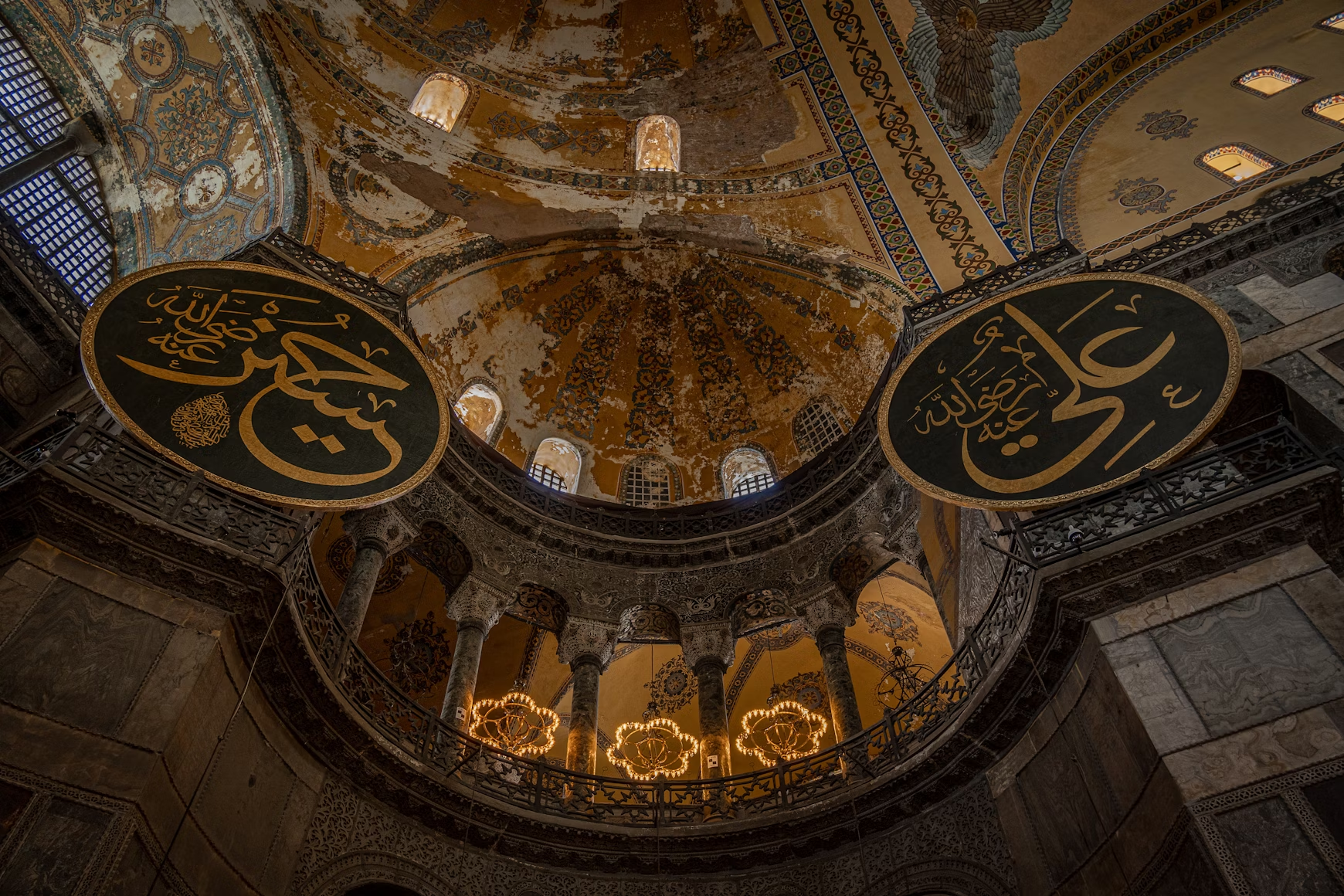


The Hagia Sophia is one of the tourist destinations that is best known in Istanbul. Throughout the entire time of over 1,400 years, it wrote and read the brightest and the deepest pages of history; from being originally constructed in the years 537 AD as a Byzantine cathedral as a church, through a mosque, and eventually as a museum. Powerful constructions bring the visitor to more than just national and religious definitions; they transform the traveler. During Turkey holidays, this national, cultural, and religious monument continues to amaze with its sheer grandeur and depth of historical significance, offering a different experience to those who care to explore it in the industrious city formerly known as Istanbul.
The most modern architectonics and history of Hagia Sophia are that it is the greatest landmark of Istanbul. The cathedral built by the Byzantine Emperor Justinian I in the 6th century stood as a monument of the golden age of the Byzantine Empire. In the course of history, Hagia Sophia has been a church and mosque as well as a studied museum; most importantly, it has become a symbol of cultural and religious convergence. During international tours, millions of tourists from all countries come to this place, making it the most visited site in Istanbul today.
Visitors are taken aback by the extensive and richly textured interior of the Great Church. An interplay of Byzantine mosaics and Islamic calligraphies, the floating dome above the central nave creates an atmosphere of awe and, with the most beautiful frescoes and mosaics, narrates some stories of both Christianity and Islam. As part of your Europe Travel Guide, the architecture of Hagia Sophia is just a testament to its greatness; one of the greatest apotheoses of an architectural form; a symbol of many cultures and religions that have made their presence felt in the great city of Istanbul.
The history of Hagia Sophia is rich and complex: it was first constructed as a Byzantine Orthodox cathedral in 537. For almost 1,000 years, it has been the largest cathedral in the world. After the Ottoman Turks conquered Constantinople in 1453, Sultan Mehmed II converted Hagia Sophia into a mosque and added several minarets and Islamic features, although most of the Christian art and mosaics were kept intact. Such an act symbolized the transformation of the city from a Christian Byzantium into an Islamic Ottoman one. For those considering European vacations, Hagia Sophia stands as a landmark embodying the city's continuously changing identity for culture and religion.
It was in 1935 that the church turned a mosque under Mustafa Kemal Atatürk into a museum which reflected the new secular vision of the Turkish Republic. In recent times, however, it has yet again reverted to its designation as a mosque, providing a type of site for Islamic worship but at the same time entertaining throngs of tourists. Throughout the years in which conversion was occurring, the Hagia Sophia proved to be a symbol of endurance and cultural amalgamation, bridging history by civilizations and religions.
It shows a phenomenal and altogether extraordinary brilliance of architecture in a perfectly syncretic Byzantine-Ottoman style. The greatest feature is its dome, which spans 31 meters in diameter and almost defies gravity. It is robustly supported at the edges so that a great part of the ceiling is not transmitted vertically through the columns. When completed, it was a great achievement and had a great influence on other architectural structures. As one of the top attractions of Turkey, at times, visitors are left spellbound by the wondrous glimmer of sunlight-filtered windows, which give the interior an ethereal as well as other-worldly quality.
Besides the dome, the interior of Hagia Sophia has many marble-inlaid columns and baroque mosaics, as well as gargantuan frescoes. Each element has a history of canned complexity. Extraordinarily valuing space, the galleries are added out of the built imagination to the meaning of openness and depth. There is not one atmosphere or mood in the grandiose edifice but a blend of Christian and Islamic metonymies along with Christian mosaics and Islamic calligraphy superbly blend effortlessly into the atmosphere of the Hagia Sophia: a style unique and harmonious.
The cultural significance of Hagia Sophia is well understood both for the city and the world. It is one of the finest examples of Byzantine architecture as a model for other important buildings such as the Blue Mosque and the Süleymaniye Mosque. It has been a site politically and religiously important for centuries rather than just an architectural contribution. It was the de facto seat of the Eastern Orthodox Church for over 900 years of institutional history and faces today millions of believers as a place of spirituality even after its transformation as a mosque.
For a long period in history, Hagia Sophia contributed as a museum in furthering the interests of secularism in Turkey, opening up to scholarship, tourism, and pilgrimage. Today, the building continues to fulfill an important cultural function as a mosque and still draws worshippers and visitors from different backgrounds. The name itself proves its standing with Istanbul as a bridge city representing cultures, religions, and histories, and therefore a place for all visitors in town.
Visiting Hagia Sophia is akin to stepping into a living museum. The whole setting, with its awe-inspiring architecture, rich history, and a blend of cultures, could be with anyone. In its variety and ever-evolving identity, the Hagia Sophia stands for everything this city has come to be for its interest, architectural elegance, or the history of centuries everyone knows, whatever your mind is set to consider about Hagia Sophia, with or without religious association. As one of the famous sites in Istanbul, a completely pure visit to Istanbul without making it to this great place would not be fulfilled; this is the place where past and present run harmoniously together in what is a glorious setting in very unique form.

Copyright © 2024 All Rights Reserved
